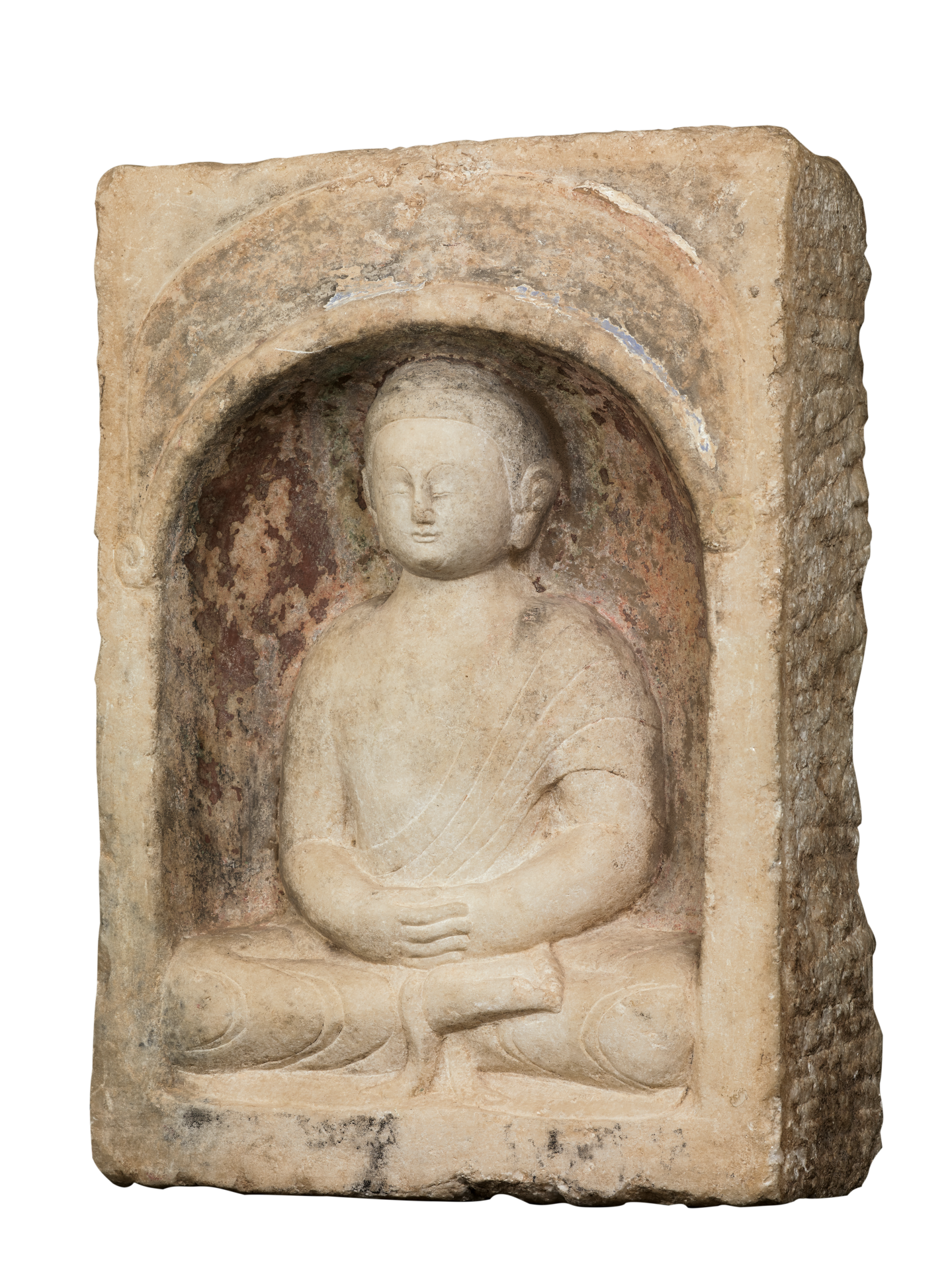Niche with Meditating Buddha
This ogive niche carved from white stone has a lintel with an inconspicuous apex and scrolling ends, which represents the typical lintel design of Northern Qi (550-577 CE) niches. The entire niche and the Buddha statue were once covered with polychrome painting. Although only traces of pigments remain, the piece is an extreme rarity. Statuary carved from Dingzhou white stone from Hebei were predominantly coloured in red and black, supplemented by green, brown and blue to produce a vibrant and splendid palette. Traces of blue pigment remain on the lintel of this niche, while reddish brown pigment revealing the original shape of the nimbus and mandorla can still be found in the interior of the niche.
The Buddha seated inside the niche has a low uṣṇīṣa, smooth hair without textural modelling but with traces of black pigment remain; large broad ears, an oblong face with plump cheeks, close-set facial features, a broad forehead above fine eyebrows, eyes resembling straight horizontal slits, slightly bulging eye sockets, pupils delineated by fine incised lines, a long nose bridge with wide nostrils, a slightly protruding chin, and a relaxed and tranquil countenance suggesting deep meditation. The kāṣāya bares the right side of the body. The Buddha is seated in ‘lotus posture’ (padmāsana), with hands overlapping in ‘meditation gesture’ in front of the belly.
He has a solid build with broad squarish shoulders, a slightly contracted waist and abdomen, a strong fleshy chest, sturdy chubby arms, thick plump palms and curvy long fingers with fine tender knuckles. The modelling of the robe suggests an ethereal fabric that closely follows the contours of the body, allowing the undulation of the muscles clearly discernible. The drapery folds executed by incised lines are neatly arranged and sparsely spaced. The folds on the upper body run in parallel lines while those around the legs are represented by double U-shaped incised lines, demonstrating the unique stylistic characteristics of Northern Qi statuary from Dingzhou in Hebei.
